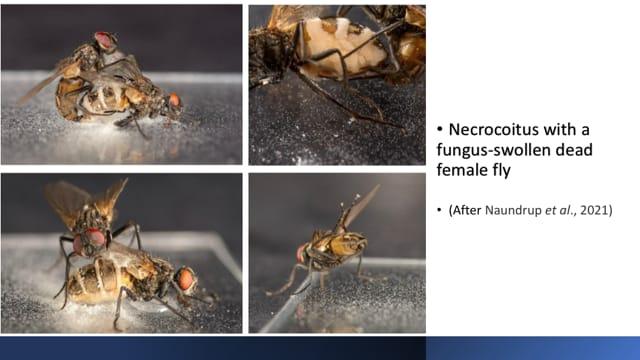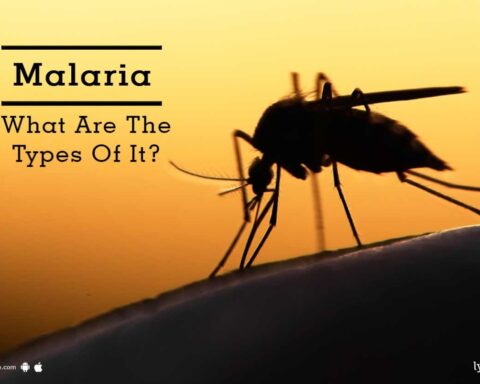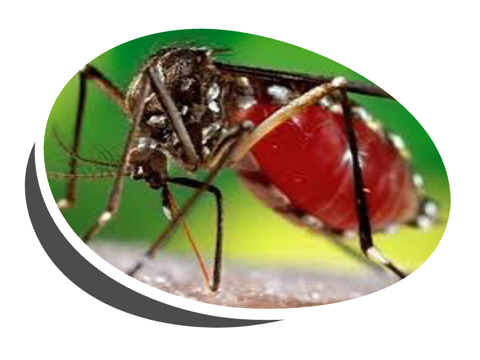Necrophilia is the practice of engaging in s3xual intercourse with and/ or having an unhealthy attraction to a corpse. The practice is widespread in nature and has been reported not only in mammals but in birds and amphibians.
Species survival and dissemination are akin to arms race. All species, even in the microbial world, are willing to go to any length to preserve and enhance the survival of their kind. Microorganisms are extremely intelligent. Crafty old devils they are, always adapting and finding new ways to survive and multiply – the infamous Coronavirus is a case in point. And when it comes to playing dirty for survival, microorganisms are tops. There are no tricks in the book they will not resort to but the story you are about to read takes trickery to a whole new level.
Join our WhatsApp ChannelCertain flowers use s3xual mimicry of the opposite s3x to attract insect for pollination. Entomopathogens (i.e. insect pathogens) attract new hosts or vectors (carriers) by secreting volatile compounds. An insect pathogenic fungus called, Entomophthora muscae, behaviourally control its housefly host (Musca domestica) so that infected flies shortly before death perch on high platforms and die with spread out wings such that their posture is conducive for release of infectious fungal spores (or conidia), see picture, bottom right. This makes it possible for flies in the nearby area of the dead flies to get hit by the spores and get infected. Also the conidiophores (branching hyphae bearing spores) form halos on the surface of dead flies and infect other live ones when they come into contact with them. In many instances, male flies have been observed mating with fungus-swollen dead females!
READ ALSO: World Malaria Report 2023: A call for concerted action to address growing threats
A recent non-peer reviewed paper published in the preprint server for biology, BioRxiv, shows that the fungus might have perfected its act and is producing an aphrodisiac to entice male flies into mating with fungus-swollen dead females!
In the study, it appears that the fungus E. muscae, uses s3xual mimicry to induce healthy male flies into committing necrophilia (in this case necrocoitus is the more appropriate word), so that it could infect the flies with its lethal conidia. Flies have an extraordinary sense of smell. Their antennae are covered with tiny hairs called sensilla with which they can sniff out the tiniest of odours from a great distance. The fungus capitalises on this acute sense of smell to manipulate the flies.
Chemical profiling shows that the fungus “manufactures” and releases a blend of volatile chemical compounds made up of ethyl octanoate and sesquiterpenes to attract and induce male flies into mating with female flies already killed by the fungus, see pictures, top left and right, respectively. This is in order to enhance its own dissemination by infecting the live male flies during mating. Both chemicals are known s3x-attractants in many insects with ethyl octanoate produced during yeast fermentation and is often associated with fruits. It is a fatty acid ester used as a scent additive in the perfume industries. It is also used in the food industries as a flavouring agent. While farnesol, a sesquiterpene alcohol, is an ingredient in perfume production.
Normal mating in flies lasts for more than an hour but in the study, the researchers found that when healthy male flies mate with dead females, the duration was much shorter but still enough for the fungal spores dislodged during active necrocoitus process to infect the male. Mating preference was at the late sporulation stage when the blend of aphrodisiac was at optimum concentration.
The cheeky devil is not finished yet. The fungus like a true entrepreneur caters for different pleasures: those who like to have s3x, those who like to eat, and those who like to have s3x and eat. As previously mentioned, one of the chemicals, ethyl octanoate, contained in the blend of aphrodisiac produced by the fungus, is both a perfume additive and a flavour enhancer in food. It appears that the fungus produces a double whammy compound that not only induces flies to commit necrocoitus so that they can be infected but also makes the fungus tasty enough to be eaten by the flies (see picture, bottom left). In other words, if any of the flies is not interested in sex, it should be interested in food!
Flies traditionally are vectors of many diseases, especially in dirty and poorly cleaned environments. Therefore, this current finding could serve as a model for designing behaviour-manipulating insecticides.


















